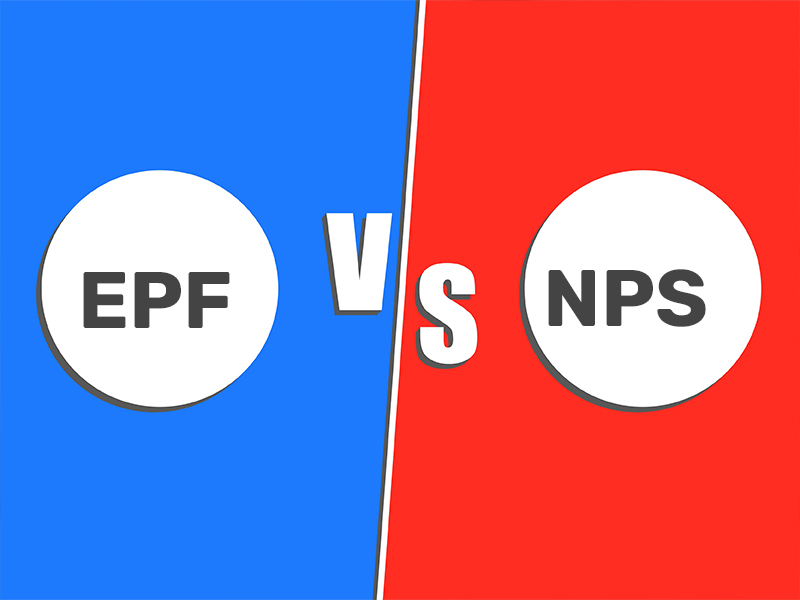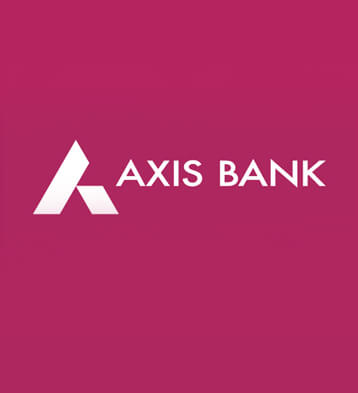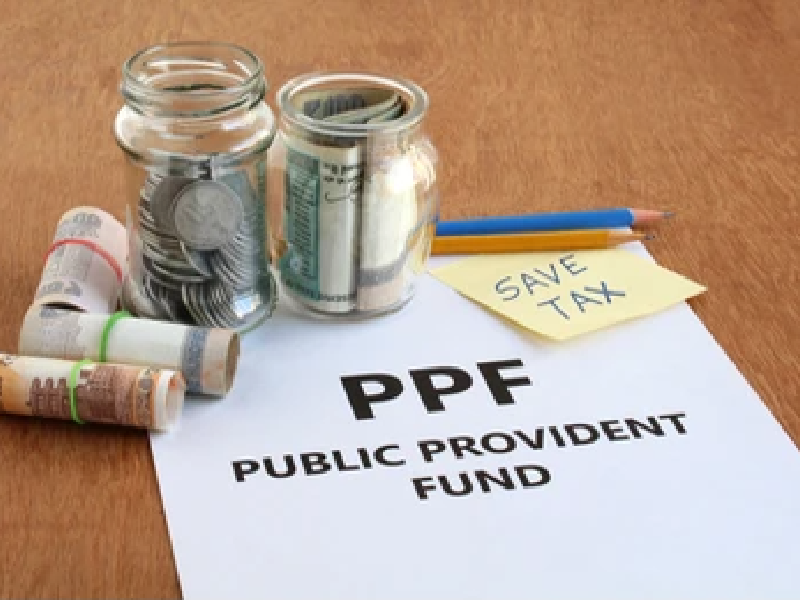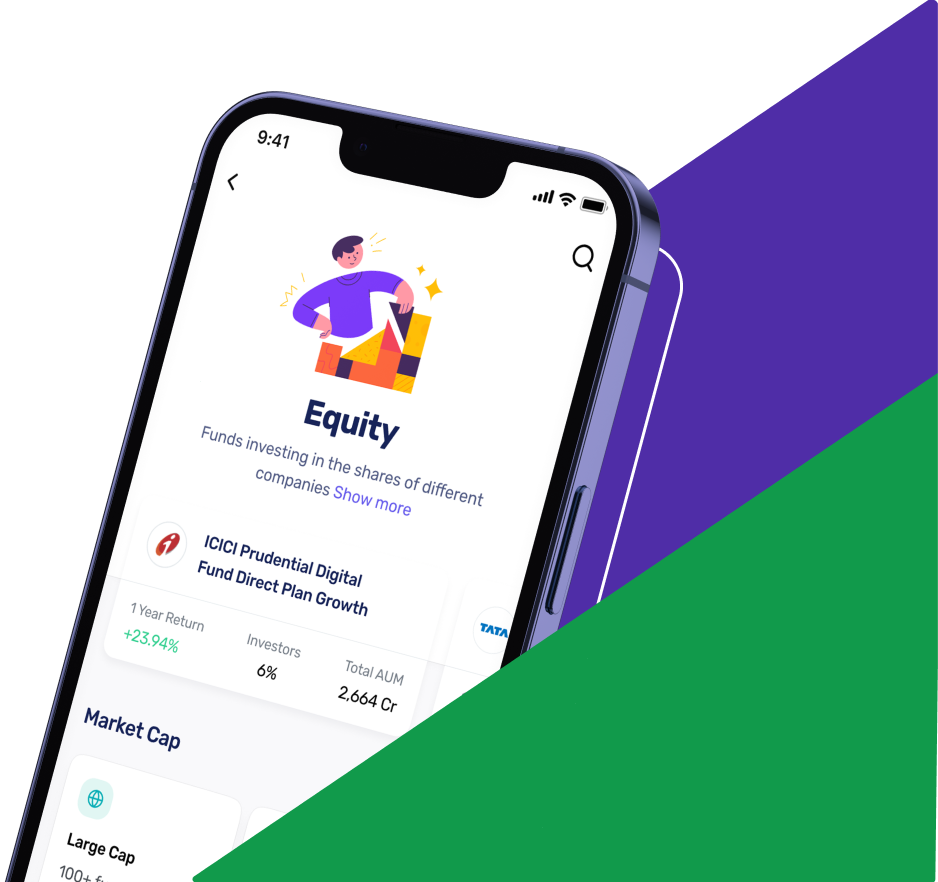
Both EPF ( Employees’ Provident Fund ) and NPS ( National Pension System ) are great options of investment when it comes to securing your post retirement life as well as getting maximum benefits throughout your working years. Employees of private companies who do not enjoy pension benefits from the government have to largely depend on both these schemes for their post retirement income.
Along with EPF and NPS, PPF ( Public Provident Fund ) is another popular choice among the employees but as far as this article is concerned we are going to learn more about EPF and NPS while comparing them to help you choose the better investment option among them.
What is EPF?
EPF or Employees’ Provident Fund is created by EPFO ( Employees Provident Fund Organisation). The contributions made by you as an employee and your employer throughout the period of your employment under the EPF scheme forms the EPF or Employees’ Provident Fund, which you can use after your retirement. Making these contributions per month helps you save a portion of your salary for using it in the long run.
These monthly contributions made by you and your employer go into trusts formed by the following three schemes which are in act under the EPF Act of 1952:
- Employees’ Provident Fund Scheme ( EPF) 1952
- Employees’ Deposit Linked Insurance Scheme (EDLI) 1976
- Employees’ Pension Scheme (EPS) 1995
While your contribution as an employee will go only in the EPF, your employer’s contribution goes to EPF, EPS and EDLI.
The following table shows the distribution of the employees’ and employer’s contributions:
| Contribution by: | Scheme | ||
| EPF | EPS | EDLI | |
| Employee | 12% | 0% | 0% |
| Employer | 3.67% | 8.33% | 0.5% |
The above contributions are made out of the employees’ salary.
For example: Naina has a monthly salary of Rs. 20,000. Accordingly, 12% of her salary, that is Rs. 2,400 will go into the EPF as her contribution. While her employer will make a contribution of Rs. 734 in the EPF as that is the 3.67% of her salary amount.
Benefits of EPF
- Employees get a fixed rate of interest added to their EPF account at the end of every year and also some added benefits at the time of its maturity.
- Employees who use the EPF schemes get tax benefits and are eligible for tax exemption of up to Rs. 1.5 lakh.
- EPF is a great investment for emergencies as there is an option available for premature withdrawal. The employee can withdraw a partial amount of the EPF to meet their needs at the time.
- It’s a good investment to secure your post retirement life as a part of your contribution directly goes to the Employees’ Pension Fund (EPS) without you having to pay any extra money.
What is NPS?
Securing your income post retirement so as to enjoy a worry free retired life is a goal of almost every person. NPS or National Pension Scheme is one of the schemes that helps you with it. It is a long term investment scheme introduced by the government of India under Pension Fund Regulatory and Development Authority (PFRDA).
Using this scheme you can invest money in regular amounts throughout your working life and use the accumulated amount after your retirement. You can withdraw a certain percentage of the accumulated amount while the remaining amount will be given to you as pension on a regular basis.
This scheme is especially good for people who have long term financial goals as there aren’t many short term benefits associated with this scheme. The people working in the private sector can use this scheme to secure their post retirement income.
There are two choice options when it comes to investing in NPS— auto choice and active choice.
In auto choice the investment is chosen for you based on your profile, your age, past investments, etc. In active choice you can actively choose your investment.
Types of NPS Accounts
There are two types of NPS accounts— Tier I account and Tier II account. The following table shows the main differences between Tier I and Tier II accounts-
| Tier I | Tier II |
| Tier I account is mandatory while investing in NPS. | Once you have a Tier I account, creating a Tier II account is a voluntary choice. |
| Withdrawals are not permitted through a Tier I account. | 2. Withdrawals through Tier II account is permitted. |
| You get tax exemptions upto 2 lakh. | 3. You get tax exemption up to 1.5 lakh. |
| Minimum contribution is Rs. 500 | 4. Minimum contribution is Rs. 250 |
Benefits of NPS
- You enjoy tax benefits upto 1.5 lakh along with which you can also apply for an additional contribution of 50,000 taking the overall tax benefits up to Rs. 2 lakh.
- As you can only withdraw a certain percentage of your corpus after retirement, the other part can be used to buy annuities and invest in equities which give you higher returns as compared to other schemes.
- There is flexibility in the choice of investment.
- There is an option of partial withdrawal with NPS but you need to have contributions for at least 10 years.
EPF or NPS: Which is a Better Choice?
Now that we know the features and benefits of both EPF and NPS investments, it’s time to decide which investment is better for you. They both are good investment choices with each having its own benefits and risks.
| Basis | NPS | EPF |
| Nature | It is a scheme that helps its subscribers after retirement. | It is a scheme under the Employees’ Provident Funds and Miscellaneous Act, 1952. |
| Rate of returns | It varies based on the market conditions of stocks and bonds, but is usually at the rate of 9-12% | The average rate of return for EPF is between 8- 8.50% |
| Withdrawals | Funds cannot be withdrawn till the age of retirement with a few exceptions. | Withdrawals are permitted up to specific amounts for certain circumstances, such as medical treatment, repayment of house loans, etc. |
| Mode of investment | The investment can be done in the active choice mode or the auto investment mode. | These contributions are invested in government securities, bonds and deposits of PSUs. |
| Tax treatment | In the case of NPS, when you withdraw a percentage of the corpus and use the remaining percentage for buying annuities, the percentage withdrawn is taxable. | In EPF no taxes are applied on the maturity. |
| Returns | NPS has the potential for higher returns but these are not guaranteed. | The EPF returns are guaranteed. But, according to the budget 2021-22 the government may start imposing tax on contributions beyond 2.5 lakh thus, making it inconvenient for people with higher income. |
| Investment Goal | It is better for retirement. | It is better when it comes to having emergency funds and short term goals. |
So as with any other schemes, it is important that you make up your financial goals and decide which investment to go for. According to a few previous researches, investors have claimed that you can actually invest in both these schemes. Some even prefer it to be a better option than going for just one.
To conclude, whatever your decision may be, if you go for one of these options or both, make sure you have enough knowledge of both and make the right choice which will help you in the long run.
Frequently Asked Questions
- Is EFP a statutory mandate?
It is indeed, under the Employees’ Provident Funds and Miscellaneous Act, 1952.
- What is the contribution that has to be made to be EPF?
The contributions that have to be made to EPF are the employee’s contribution is 12% and the employer’s contribution is 3.67%.
- Can employees of private sector jobs avail NPS?
Earlier, NPS was solely there for government employees, but its mandate has been expanded to private sector employees too.
- Are there taxes applied on EPF’s maturity amount?
No, there are no taxes applicable on the maturity amount of EPF.
- Under what circumstances are EPF withdrawals allowed for EPF?
EPF withdrawals are permitted for medical treatment, repayment of house loan, purchase of site or plot of land, repair or remodelling of one’s home, and for marriage or education of one’s child.



























